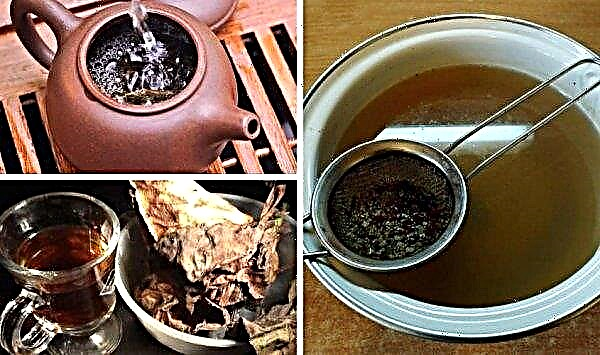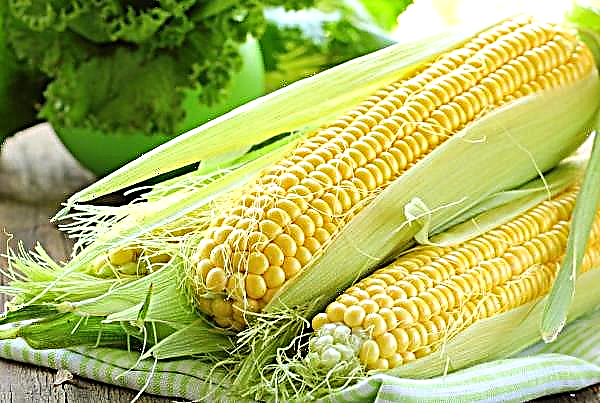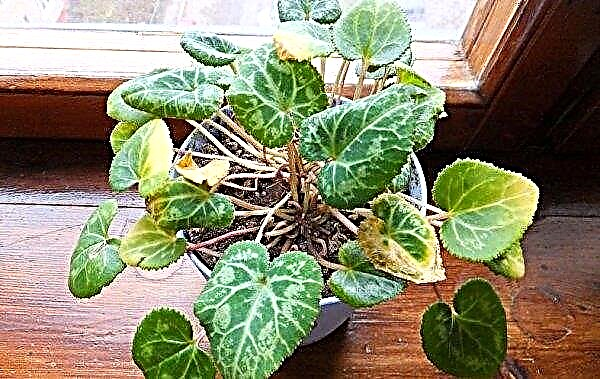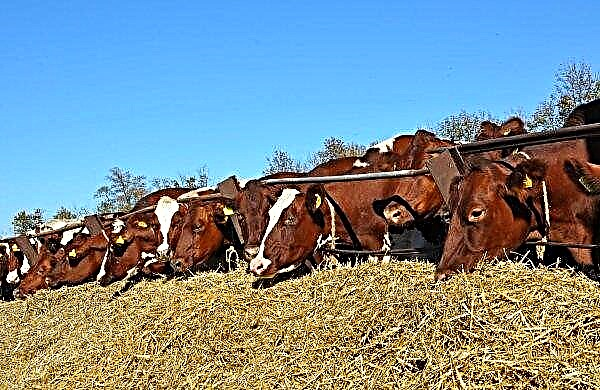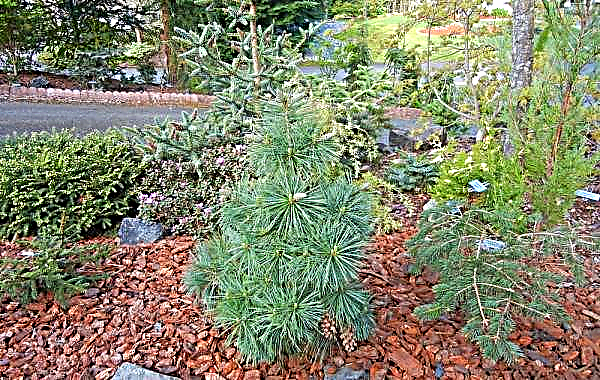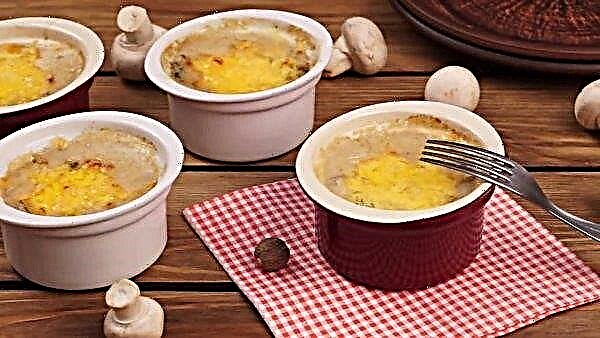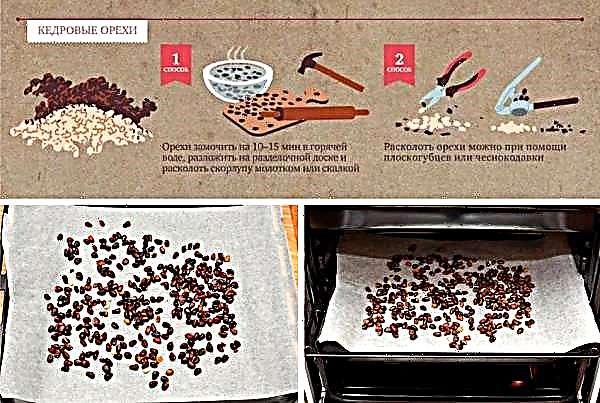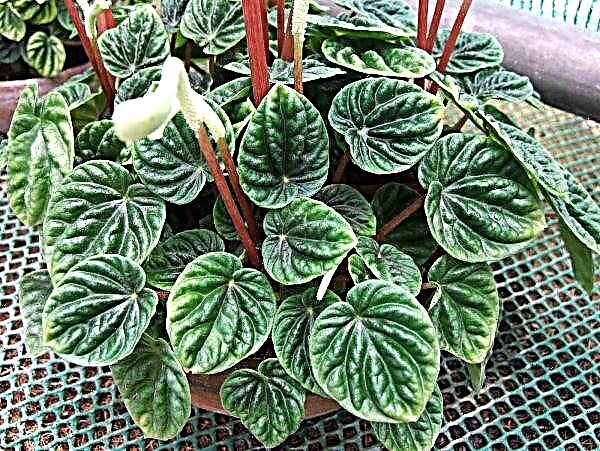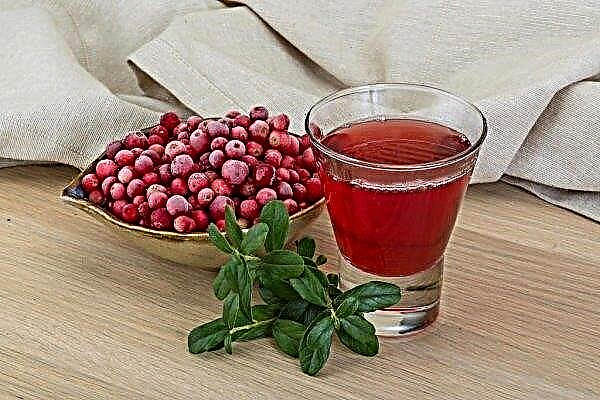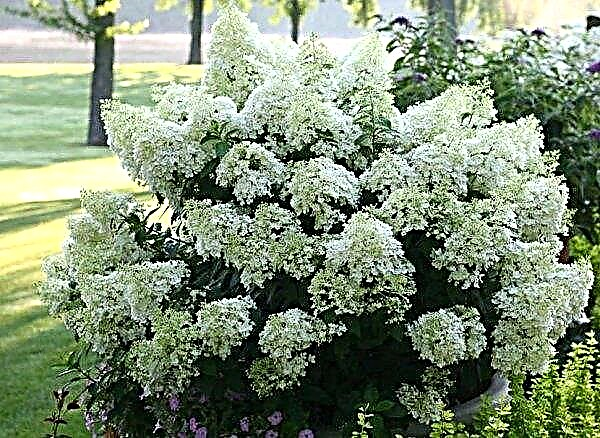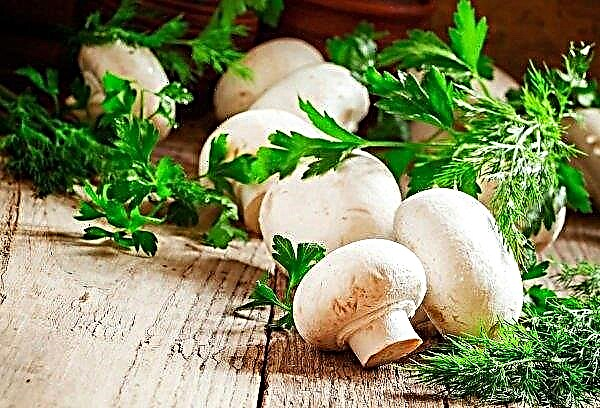Panicled hydrangea tolerates harsh climate well, therefore it is popular among gardeners in Russia. This article provides a description and subtleties of cultivating Early Sensation.
Description of hydrangea airlie sensation
Tall, up to 1.5 m bush with asymmetric due to uneven growth of branches with a dense crown. Shoots of red-brown color grow straight. The foliage is heart-shaped, large up to 20 cm long. The surface of the plate is rough to the touch with light veins. In the fall, dark green leaves acquire copper and purple hues.
Flowering is early and long, from June to September. Inflorescences are a flat or rounded pyramid formed by small flowers. The diameter of this magnificence is 15 cm and the same in height. The open baskets are white, after which they turn pink to a dark crimson tone. Some of the flowers are sterile.
The variety is distinguished by “freckles” of a rusty tone, somewhat spoiling the decorative plants that appear on sterile flowers.
Did you know? Herbivores in the wild bypass hydrangea side: foliage, branches and even roots contain cyanide glycosides - poisonous compounds.
Landscape design application
The bush can be a single flowering plant on a flower bed or lawn, combined in composition with other plants.
The variety can be used in different methods of landscape design:
- hedge;
- mixborder;
- group in tiers;
- decor of the shore of the pond.

Hydrangea looks great against the background of conifers, especially juniper of low species with silver or blue needles. Several flowering shrubs will only emphasize the decorativeness of each other.
Did you know? Despite numerous versions of the origin of the name of the culture, hydrangea is a derivative of the Latin word hortus, which means “garden”. The author of this "name" is the French botanist Philibert Commerson.
Good neighborhood with such plants:
- spirea;
- lilac;
- mock-up;
- barberry.

Landing
When planting a plant, you need to take into account its height: it will create a shadow for undersized crops. The best time for the procedure is early spring, when there is no threat of return frosts. In the southern regions, autumn planting is permissible for 1.5–2 months before the first frosts. It is advisable to avoid proximity to plants whose roots are close to the surface. Due to this biological similarity, they will oppress each other.
Seat selection
If there is a place on the plot that is lit in the morning and shaded at noon - it is simply created for Early Sensation. So the name of the variety is translated into Russian from English (another translation option is an early feeling). It is important that there is protection from the wind: the root system is located close to the surface, and may not hold the bush in a rush.
Soil preparation and seedling
Panicled hydrangea is best developed in acidic or slightly acidic soils. Dense land should be “diluted” with sand and peat at 2-3 kg per m². Digging a site, it is cleaned of plant debris.
The size of the hole should correspond to the size of the crown of the seedling. The roots of the planting material are soaked for half an hour to nourish moisture. You can add a little potassium permanganate to a slightly pink color in the water.
Landing process
The earth extracted during the excavation of the pit is enriched with Fertika fertilizer of 40 g. Sequencing:
- Half of the nutrient soil is laid to the bottom, forming a mound to the size of the roots.
- A plant is placed on top, root shoots are straightened.
- The growth point of the bush should be above the ground.
- Sprinkling the roots, the seedling should be shaken and tamped with hands to prevent the formation of air voids.
- At the end, the plant is watered with a bucket of water, you can cover it with mulch to retain moisture.

Care
Caring for a perennial is not difficult. The plant needs standard procedures: watering and top dressing. You also need to clean the trunk circle from weeds. If it is not possible to visit the site frequently, mulch is used. Any material covering the soil around the stem will protect the roots from the rapid evaporation of moisture, weed growth.
Important! When watering the plant, you need to ensure that the drops do not fall on the foliage. Moisture, evaporating under the sun, will leave dark spots on burns.
Watering
Water is maintained for irrigation for several days or rainwater is used. Moisturize the soil once a week, spending up to 3 buckets of liquid under an adult bush. In the absence of mulch, watering is needed more often - twice in 7 days.

Fertilizer
In the first year after planting the crop enough of those fertilizers that were laid in the pit. Then they feed 3 times a season:
- in spring, the Fertika preparation 50 g per m² is embedded in the soil;
- when buds appear - 70 g of potassium sulfide and 40 g of superphosphate are dissolved in 10 l of water, watered under a bush;
- in the third decade of August, watering is carried out with a mullein solution. Infusion of manure is prepared in a proportion of 1 part organics and 3 parts liquid. Aged week, the mixture is diluted 1:10 with pure water.

Pruning
An important care procedure is a sanitary haircut and shaping. The first is carried out annually in the spring, removing weak and broken shoots, thin or curved. Forming a crown, cut off the ends of the branches, sharply protruding from the general contour.
Strong promising shoots shorten to the internodes with a fruiting kidney. Branches growing inside the crown are cut into a ring. Mowing should be done before the sap flow begins, so as not to interfere with flowering.
Radical anti-aging pruning is needed for an old bush with lignified branches. Cut the plant to the stump. Next year a young shoot will appear, which will become the basis of a beautiful crown.
Proper wintering
An adult hydrangea bush calmly winters without shelter, transferring frost to -35 ° C. Young plants do not differ in such winter hardiness and require protection from the cold. The soil around the trunk is covered with a layer of sawdust or peat 30 cm thick. Stakes are driven in around the circumference of the bush, the wire is pulled. A spruce is placed on a support to cover the plant completely.
Important! In this species, you can not bend the branches to the ground, as in a large-leaf culture. In panicled species, the shoots are not so flexible, they can break.
Breeding
The best way to propagate a crop is vegetative: cuttings or layering. The seed method is used in rare cases to obtain new hybrids.
Cutting:
- Material is harvested in early spring or summer after flowering. Cut off at an acute angle.
- If the stem is summer, the lower leaves are removed, and the upper pair are shortened by half.
- The lower part of the shoot is placed in Fundazol for half an hour.
- Planted in a container with peat and sand (2: 1), covered with a jar and a piece of plastic bottle.
- Twice a week watered, aired.
- In a month, seedlings take root.
- In winter, rooted cuttings are carried out in a cool room.
- In August, plants are planted in the garden.

Propagation by layering:
- Before the kidneys swell, a furrow of 15 cm deep is dug near the bush.
- The longest lower shoot is placed in the groove and pinched with brackets.
- The upper part of the layer is 10-12 cm above the surface, tied to a support.
- The seedling is looked after as a mother bush.
- Emerging young shoots on the bed spud.
- The next year, the young bush is separated from the donor and planted in a permanent place.

Diseases, pests and their treatment
Culture is rarely sick and affected by pests. But due to adverse weather conditions or errors in care, fungal diseases can occur, insects can appear.
Measures to deal with difficulties:
- Gray rot, powdery mildew appear as a result of high humidity. They treat the plant with a spray of Bordeaux liquid 3%.
- Aphid and spider mite. An effective insect repellent is Akarin. Spray the bush with a solution prepared in a ratio of 2 ml / 1 liter of water.
- Snails, slugs. Shellfish are harvested by hand, dusted bushes with tobacco dust and black pepper. To protect the garden from reappearance, nutshells are scattered around the plantings.
 Panicled Early Sensation - a worthy culture to decorate any garden. She acclimatizes well, does not require special care knowledge.
Panicled Early Sensation - a worthy culture to decorate any garden. She acclimatizes well, does not require special care knowledge.

